
Drogheda: Where History Meets the Irish Spirit
Discover Drogheda: A captivating blend of history, culture, and Irish charm in one of Ireland's oldest towns, nestled along the scenic River Boyne.
Drogheda, located on the banks of the River Boyne, is a town steeped in rich history and vibrant culture. As one of the oldest towns in Ireland, it offers an incredible journey back in time with its well-preserved medieval architecture and historical landmarks. St. Laurence's Gate, a majestic barbican gate from the 13th century, stands as a testament to Drogheda's storied past and provides a stunning entrance to the town's historic quarter. The town is also home to the magnificent St. Peter's Church, which houses the relic of St. Oliver Plunkett's head, adding a touch of intrigue and reverence to your visit. For those who love art and culture, the Highlanes Gallery offers a wonderful collection of contemporary and traditional art housed in a repurposed 19th-century convent. Drogheda is not just about history and culture; it also offers a taste of traditional Irish life with its lively pubs, charming cafes, and friendly locals. The vibrant Drogheda Arts Festival and the annual Fleadh Cheoil na hÉireann bring the town to life with music, dance, and celebration, making it an ideal destination for those looking to experience authentic Irish culture. Nature lovers will enjoy exploring the nearby Boyne Valley, where they can visit the UNESCO World Heritage Site of Newgrange, an ancient passage tomb that predates the pyramids of Egypt. The stunning landscape of the Boyne Valley offers plenty of opportunities for hiking, cycling, and picnicking, making it a perfect spot for outdoor enthusiasts.
Local tips in Drogheda
- Visit early in the morning to avoid crowds at popular landmarks like St. Laurence's Gate and St. Peter's Church.
- Take a guided tour of the Boyne Valley to fully appreciate the history and significance of Newgrange and other ancient sites.
- Check the local event calendar for festivals and cultural events to experience the lively spirit of Drogheda.
- Wear comfortable walking shoes as the best way to explore Drogheda's historic quarter is on foot.
- Try the local seafood at one of the town's many pubs and restaurants for a true taste of Drogheda.
Drogheda: Where History Meets the Irish Spirit
Drogheda, located on the banks of the River Boyne, is a town steeped in rich history and vibrant culture. As one of the oldest towns in Ireland, it offers an incredible journey back in time with its well-preserved medieval architecture and historical landmarks. St. Laurence's Gate, a majestic barbican gate from the 13th century, stands as a testament to Drogheda's storied past and provides a stunning entrance to the town's historic quarter. The town is also home to the magnificent St. Peter's Church, which houses the relic of St. Oliver Plunkett's head, adding a touch of intrigue and reverence to your visit. For those who love art and culture, the Highlanes Gallery offers a wonderful collection of contemporary and traditional art housed in a repurposed 19th-century convent. Drogheda is not just about history and culture; it also offers a taste of traditional Irish life with its lively pubs, charming cafes, and friendly locals. The vibrant Drogheda Arts Festival and the annual Fleadh Cheoil na hÉireann bring the town to life with music, dance, and celebration, making it an ideal destination for those looking to experience authentic Irish culture. Nature lovers will enjoy exploring the nearby Boyne Valley, where they can visit the UNESCO World Heritage Site of Newgrange, an ancient passage tomb that predates the pyramids of Egypt. The stunning landscape of the Boyne Valley offers plenty of opportunities for hiking, cycling, and picnicking, making it a perfect spot for outdoor enthusiasts.
When is the best time to go to Drogheda?
Iconic landmarks you can’t miss
Funtasia Theme Park | Drogheda
Discover endless fun at Funtasia Theme Park, Drogheda's premier destination for thrilling rides, water adventures, and family-friendly entertainment.

Battle of the Boyne Visitor Centre
Delve into Ireland's rich history at the Battle of the Boyne Visitor Centre, where the past comes alive through engaging exhibits and scenic views.

The TLT (Tommy Leddy Theatre)
Discover the cultural heartbeat of Drogheda at The TLT, a vibrant performing arts theatre offering diverse live performances and unforgettable events.
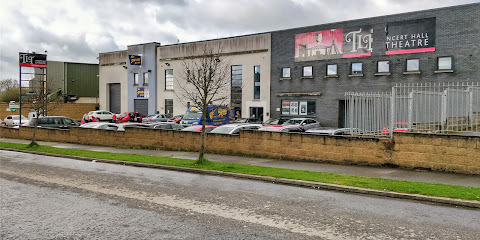
St. Peter's Parish, Drogheda
Explore the architectural beauty and serene atmosphere of St. Peter's Parish, a must-visit Catholic church in Drogheda, Ireland.

Millmount Museum
Explore the rich tapestry of Irish history at Millmount Museum, a historic landmark in Drogheda offering engaging exhibits and stunning views.

Townley Hall Woods
Experience the serene beauty and rich history of Townley Hall Woods, a stunning national forest in County Louth, perfect for nature lovers and outdoor adventures.

Maiden Tower
Discover the enchanting Maiden Tower in Mornington, Co. Meath—a historical landmark steeped in rich culture and breathtaking views.

St. Dominics Park
Explore the serene beauty of St. Dominic's Park in Drogheda, a perfect getaway for relaxation and family fun amidst lush greenery.

St. Augustine's Church
Discover the serene beauty and historical significance of St. Augustine's Church in Drogheda, a captivating Catholic church and tourist attraction.

Boyne Viaduct
Explore the Boyne Viaduct, a Victorian engineering marvel offering stunning views and a glimpse into Ireland's rich railway history.

St Peter's Church of Ireland
Discover the architectural beauty and historical significance of St. Peter's Church of Ireland in Drogheda, a must-visit cultural landmark.

Highlanes Gallery
Explore Highlanes Gallery in Drogheda, a unique art destination blending contemporary works in a stunning architectural setting.

Magdalene Tower
Discover the enchanting Magdalene Tower, a historical gem in Drogheda, showcasing stunning architecture and breathtaking views of the Irish landscape.

Drogheda East Lighthouse
Drogheda East Lighthouse: A historical gem along the Co. Meath coast, offering stunning views and rich maritime heritage for every traveler.

Beaulieu House and Garden.
Discover the rich history and breathtaking beauty of Beaulieu House and Garden in County Louth, a perfect retreat for history lovers and nature enthusiasts.

Unmissable attractions to see
Phoenix Park
Discover the beauty and tranquility of Phoenix Park, Dublin's largest urban park, featuring stunning landscapes, wildlife, and historical landmarks.

The Temple Bar Pub
Experience the vibrant atmosphere and rich culture at The Temple Bar Pub, Dublin's iconic Irish pub known for music, food, and hospitality.

St Stephen's Green
Discover the beauty of St Stephen's Green, a historic park in Dublin, featuring serene gardens, scenic lakes, and rich cultural heritage.

Dublin Castle
Explore Dublin Castle, a historic landmark that narrates the rich tapestry of Ireland's past through its stunning architecture and captivating stories.

Dublin Zoo
Explore Dublin Zoo: A family-friendly attraction in Phoenix Park showcasing a diverse range of wildlife and dedicated to conservation and education.

St Patrick's Cathedral
Explore the grandeur of St. Patrick's Cathedral, Dublin's largest cathedral, rich in history and stunning Gothic architecture.

Croke Park
Explore Croke Park, Dublin's iconic stadium and cultural hub, where sports and Irish heritage come alive in an unforgettable experience.

Guinness Storehouse
Explore Dublin's Guinness Storehouse, a must-visit brewery and tourist attraction celebrating Ireland's rich brewing heritage and culture.

National Botanic Gardens
Explore the National Botanic Gardens in Dublin, a serene sanctuary filled with diverse flora, stunning landscapes, and rich historical charm, perfect for every tourist.

3Arena
Experience the electrifying atmosphere of live music at Dublin's 3Arena, home to world-class performances and unforgettable memories.

National Gallery of Ireland
Explore the National Gallery of Ireland, an artistic haven showcasing masterpieces of European and Irish art in the heart of Dublin.

Malahide Castle & Gardens
Discover the rich history and stunning beauty of Malahide Castle & Gardens, a premier tourist attraction near Dublin, Ireland.

Paddywagon Tours Ltd
Discover the magic of Ireland with Paddywagon Tours, your gateway to unforgettable adventures and breathtaking landscapes.

The Book of Kells Experience
Explore the Book of Kells at Trinity College Dublin, a captivating journey through ancient manuscripts and Irish heritage in the heart of the city.

Ha'penny Bridge
Explore Dublin's iconic Ha'penny Bridge, a historic pedestrian crossing offering stunning views and a glimpse into the city's rich cultural heritage.

Essential places to dine
Black Bull Inn
Experience delightful grilled dishes at Black Bull Inn in Drogheda - where flavor meets friendly service in a cozy atmosphere.

Scholars Townhouse Hotel
Discover comfort and elegance at Scholars Townhouse Hotel in Drogheda - where history meets modern hospitality.
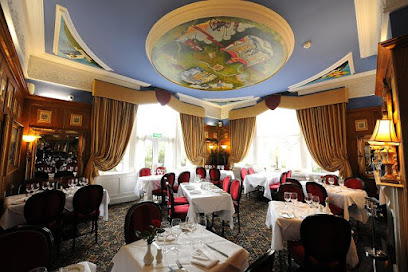
Yeah Burgr
Discover gourmet burgers in Drogheda at Yeah Burgr - where taste meets casual dining in a lively atmosphere.

The Pheasant Bar & Grill
Experience delicious food and warm hospitality at The Pheasant Bar & Grill in Drogheda – your perfect stop for local flavors!

The Trinity Quarter
Discover exceptional steak and vibrant atmosphere at The Trinity Quarter in Drogheda - perfect for every occasion!
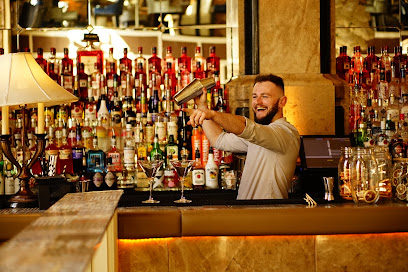
IL Forno
Experience authentic Italian flavors at IL Forno in Drogheda, where every pizza is crafted with passion and quality ingredients.

Duende Gastro Bar
Experience the best of local cuisine at Duende Gastro Bar in Drogheda, where culinary creativity comes alive with every dish.

Casanova Italian and Mediterrean Restaurant
Experience authentic Italian cuisine at Casanova Restaurant in Drogheda - where every dish tells a story of flavor and tradition.

Eddie Rocket's
Indulge in classic American diner fare at Eddie Rocket's in Drogheda—where every meal feels like a trip down memory lane.

Aisha's Cafe & Bistro
Experience the best of Lebanese cuisine at Aisha's Cafe & Bistro in Drogheda - where flavor meets tradition.

Greenmount House
Discover the culinary charm of Drogheda at Greenmount House – where local flavors meet a warm ambiance.

Antica Toscana
Experience authentic Italian cuisine at Antica Toscana in Drogheda – where delicious pizzas meet charming hospitality.

Moorland Café
Discover Moorland Café in Drogheda: A cozy bakery and café offering delicious homemade cakes and pastries in a charming atmosphere.

The Thatch Bar & Kitchen
Discover the charm of Irish dining at The Thatch Bar & Kitchen - where tradition meets innovation in every delicious bite.

D'Vine Bistro & Tapas Bar
Experience exquisite tapas at D'Vine Bistro & Tapas Bar in Drogheda—where every dish tells a story of flavor and tradition.

Markets, malls and hidden boutiques
Scotch Hall Shopping Centre
Explore Scotch Hall Shopping Centre in Drogheda, a vibrant shopping hub with diverse retail, dining, and entertainment options for all visitors.
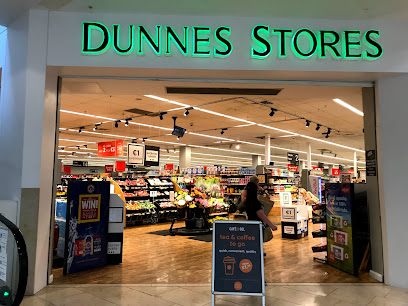
Drogheda Town Centre
Discover Drogheda Town Centre: Your ultimate shopping, dining, and entertainment destination in the heart of Drogheda.

Southgate Shopping Centre
Discover a shopper's paradise at Southgate Shopping Centre in Drogheda, where fashion, dining, and entertainment seamlessly blend.
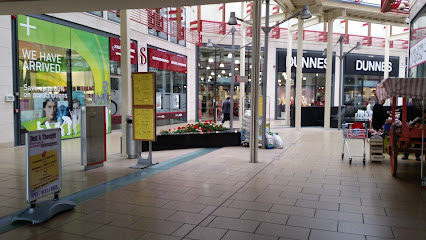
TK Maxx
Uncover unbeatable deals at TK Maxx in Drogheda, where fashion and homeware meet affordability in a vibrant shopping experience.

Home Store + More
Explore Home Store + More in Drogheda for an extensive selection of quality home goods, stylish decor, and practical essentials.
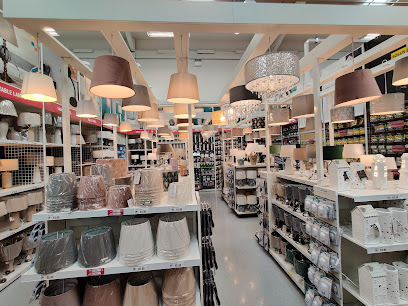
Laurence Shopping Centre
Discover the lively Laurence Shopping Centre in Drogheda, a perfect blend of shopping, dining, and entertainment for every visitor.

Penneys
Discover affordable fashion and trendy styles at Penneys in Drogheda, a must-visit destination for savvy shoppers.

Dunnes Stores
Experience the vibrant shopping scene at Dunnes Stores in Drogheda, where quality meets value in a friendly, welcoming environment.

MrPRICE Drogheda
Shop smart at MrPRICE Drogheda, where unbeatable deals on fashion, home goods, and more await every savvy traveler.

Dealz
Experience unbeatable value at Dealz in Drogheda, your go-to convenience store for clothing, home goods, and more at discount prices.

Choice Drogheda
Discover a diverse range of home goods, pet supplies, and party essentials at Choice Drogheda, your ultimate shopping destination.

Shaws Department Stores
Explore Shaws Department Stores in Drogheda for a diverse range of men's and women's clothing and unique gift ideas, all at moderate prices.
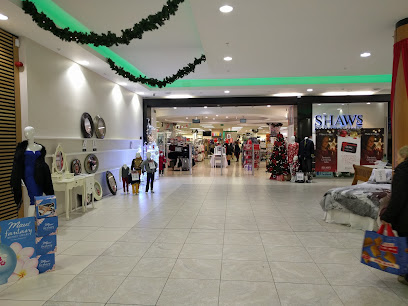
Moldova Stores Drogheda
Experience the rich flavors of Moldova at Moldova Stores Drogheda, your go-to grocery for authentic Eastern European products.

O'Briens Wine Off-Licence Drogheda
Explore a diverse selection of wines at O'Briens Wine Off-Licence, Drogheda's premier wine store for enthusiasts and casual shoppers alike.

River Island
Discover the latest trends in fashion at River Island, Drogheda's premier clothing store, offering stylish apparel for every occasion.

Essential bars & hidden hideouts
Black Bull Inn
Discover the charm of Irish cuisine at Black Bull Inn, Drogheda's premier grill and restaurant, known for its warm atmosphere and delicious local flavors.

Weavers Bar & Venue
Discover the lively atmosphere and local flavors at Weavers Bar & Venue in Drogheda, a perfect spot for relaxation and socializing.

Clarkes Bar
Experience the heart of Drogheda at Clarkes Bar, where traditional Irish hospitality meets a lively atmosphere and delicious local cuisine.

The Cross
Experience the vibrant local culture at The Cross, Drogheda's ideal bar for drinks, live music, and a welcoming ambiance.

The Mariner
Discover the vibrant atmosphere and local flavors at The Mariner, a must-visit bar along the beautiful Drogheda waterfront.

The Grey Goose
Discover the inviting charm of The Grey Goose, a delightful bar in Drogheda offering a variety of drinks and a vibrant local atmosphere.

D'Vine Bistro & Tapas Bar
Discover the authentic taste of Spain at D'Vine Bistro & Tapas Bar in Drogheda, where every dish is a celebration of Mediterranean flavors.

The Railway Tavern
Experience the local charm and vibrant atmosphere at The Railway Tavern in Drogheda, a perfect bar and coffee store for all occasions.

Cagney's Bar
Experience the Heart of Drogheda at Cagney's Bar: Enjoy Authentic Irish Hospitality, Great Drinks, and Lively Atmosphere!
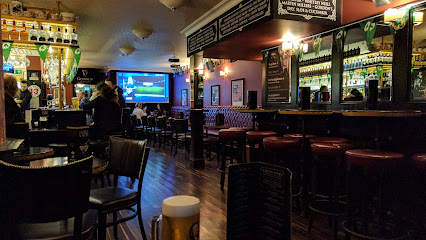
Sarsfield's
Experience the heart of Irish hospitality at Sarsfield's in Drogheda, where great food and drinks meet a vibrant local atmosphere.

The Market Bar
Discover the charm of The Market Bar in Drogheda, where local flavors and a vibrant atmosphere come together for an unforgettable experience.
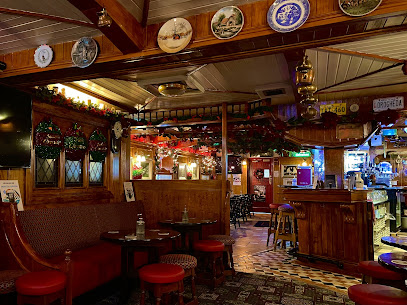
The Admirals Drogheda
Discover the lively atmosphere of The Admirals Drogheda, a premier bar offering delightful drinks and vibrant local culture in the heart of Lagavooren.

The Punt Pub & Cafe
Experience the heart of Drogheda at The Punt Pub & Cafe, where traditional Irish warmth meets modern flair in a delightful pub atmosphere.
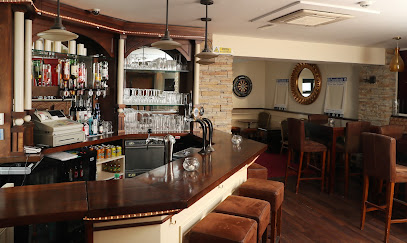
The Fairgreen Bar Drogheda
Experience the warmth of Irish hospitality at The Fairgreen Bar in Drogheda, where great food, drinks, and live music come together.

Donaghy's Bar
Discover Donaghy's Bar: A vibrant Irish pub in Moneymore, Drogheda, where locals and travelers enjoy authentic drinks, food, and music.

Local Phrases
-
- HelloDia duit
[Dee-ah gwit] - GoodbyeSlán
[Slawn] - YesTá
[Taw] - NoNíl
[Neel] - Please/You're welcomeLe do thoil
[Leh duh hull] - Thank youGo raibh maith agat
[Guh rev mah ag-gut] - Excuse me/SorryTá brón orm
[Taw broan or-um] - How are you?Conas atá tú?
[Kun-us ah-taw too] - Fine. And you?Tá mé go maith. Agus tú?
[Taw may goh mah. Ah-gus too] - Do you speak English?An bhfuil Béarla agat?
[On will bear-lah ag-gut] - I don't understandNí thuigim
[Ne toog-im]
- HelloDia duit
-
- I'd like to see the menu, pleaseBa mhaith liom an mhenu a fheiceáil, le do thoil
[Bah wyh lum on menuh ah eck-awl, leh duh hull] - I don't eat meatNí ithim feoil
[Ne e-him fweel] - Cheers!Sláinte!
[Slawn-cheh] - I would like to pay, pleaseBa mhaith liom íoc, le do thoil
[Bah wyh lum eek, leh duh hull]
- I'd like to see the menu, pleaseBa mhaith liom an mhenu a fheiceáil, le do thoil
-
- Help!Cabhraigh!
[Kow-ree] - Go away!Imigh uait!
[Im-eeh oot] - Call the Police!Glan an Garda!
[Glan on gar-dah] - Call a doctor!Glan an dochtúir!
[Glan on duck-too-ir] - I'm lostTá mé caillte
[Taw may kye-uhl-teh] - I'm illTá mé tinn
[Taw may chin]
- Help!Cabhraigh!
-
- I'd like to buy...Ba mhaith liom a cheannach...
[Bah wyh lum ah kyan-ukh] - I'm just lookingNíl ach ag féachaint
[Neel oh-ukh eg fay-khent] - How much is it?Cé mhéad atá air?
[Kay vay-ad ah-taw air] - That's too expensiveTá sé sin ró-dhaor
[Taw shay shin row-gweer] - Can you lower the price?An féidir leat an praghas a laghdú?
[On fay-dur lat on pruh-gus ah lay-goo]
- I'd like to buy...Ba mhaith liom a cheannach...
-
- What time is it?Cén t-am é?
[Kane tahm ay] - It's one o'clockTá sé a haon
[Taw shay ah hayn] - Half past (10)Leathuair tar éis a deich
[La-hoo-ir tar es ah deh] - MorningMaidin
[Mah-din] - AfternoonTráthnóna
[Traw-noh-nah] - EveningTráthnóna
[Traw-noh-nah] - YesterdayInné
[In-ay] - TodayInniu
[In-yoo] - TomorrowAmárach
[Ah-mah-rahk] - 1A haon
[Ah hayn] - 2A dó
[Ah doh] - 3A trí
[Ah tree] - 4A ceathair
[Ah kya-hir] - 5A cúig
[Ah koo-ig] - 6A sé
[Ah shay] - 7A seacht
[Ah shakht] - 8A hocht
[Ah hukht] - 9A naoi
[Ah nee] - 10A deich
[Ah deh]
- What time is it?Cén t-am é?
-
- Where's a/the...?Cá bhfuil an...?
[Kah will on] - What's the address?Céard atá ar an seoladh?
[Cay-ard ah-taw air on sho-lah] - Can you show me (on the map)?An bhfuil tú in ann dom a thaispeáint (ar an léarscáil)?
[On will too in on dum ah hash-paint (ar on lair-skawl)] - When's the next (bus)?Cathain a bheidh an bus seo ar fáil?
[Kah-hain ah vay on bus shuh er fawl] - A ticket (to ....)Ticead (go dtí ....)
[Tick-ad (guh dee)]
- Where's a/the...?Cá bhfuil an...?
History of Drogheda
-
Drogheda, located on the River Boyne, was founded in 1194 by the Normans. Its strategic location made it a significant medieval town, serving as a major trading point and defensive stronghold. The town was originally divided into two parts, Drogheda-in-Meath and Drogheda-in-Oriel, which were later united under one charter in 1412.
-
One of the most pivotal events in Irish and British history, the Battle of the Boyne took place near Drogheda on July 1, 1690. This battle saw the forces of Protestant King William III defeat the Catholic King James II. The outcome solidified Protestant dominance in Ireland and had lasting political and cultural repercussions.
-
In 1649, Drogheda became the site of one of the most infamous sieges during the English Civil War. Oliver Cromwell's New Model Army besieged the town, which was held by Royalist forces. After a short but brutal assault, Cromwell's forces breached the walls, leading to a massacre of the defenders and many civilians. This event is still remembered for its brutality and is a significant part of Drogheda's historical narrative.
-
St. Peter's Church in Drogheda is home to one of Ireland's most revered relics, the preserved head of St. Oliver Plunkett. Plunkett was the Roman Catholic Archbishop of Armagh who was martyred in 1681 during a period of anti-Catholic sentiment. His canonization in 1975 made him a symbol of faith and resilience for many Irish Catholics.
-
Drogheda played an important role during the Industrial Revolution in Ireland. The Boyne Viaduct, constructed in 1855, is one of the engineering marvels of the era, facilitating rail transport and trade. The town also had numerous mills and factories, contributing to its growth and economic development during the 19th and early 20th centuries.
-
The Drogheda Arts Festival, established in 2004, is a celebration of the town's rich cultural heritage. Held annually, the festival showcases local and international artists across various disciplines, including music, theatre, visual arts, and literature. It reflects Drogheda's vibrant community spirit and its ongoing commitment to the arts.
-
The Highlanes Gallery, opened in 2006, is housed in a former Franciscan church and monastery. It features a permanent collection of fine art alongside rotating exhibitions. The gallery highlights Drogheda's commitment to preserving and promoting visual arts, making it a cultural landmark in the town.
Drogheda Essentials
-
Drogheda is located in County Louth, Ireland. The nearest international airport is Dublin Airport, approximately 40 kilometers away. From Dublin Airport, you can take a bus or a train to Drogheda. The bus journey typically takes around 1 hour, while the train journey from Dublin Connolly Station to Drogheda takes about 30-40 minutes. Alternatively, you can rent a car at the airport and drive, which gives you the flexibility to explore the surrounding areas.
-
Drogheda has a reliable public transportation system, including buses and trains that connect to Dublin and other nearby towns. Local taxis and ride-sharing services are also available and convenient for short distances. For those who prefer to explore on foot, many attractions in Drogheda are within walking distance from the town center. Renting a bike is another great option to experience the town and its scenic surroundings.
-
The official currency in Ireland is the Euro (EUR). Credit and debit cards are widely accepted in hotels, restaurants, and shops. There are plenty of ATMs in Drogheda where you can withdraw cash if needed. It's advisable to carry some cash for smaller establishments and markets that may not accept cards.
-
Drogheda is generally a safe town for tourists. However, it's always wise to take standard precautions. Avoid walking alone at night in unfamiliar areas and keep an eye on your belongings in crowded places. While Drogheda does not have any specific high-crime areas targeting tourists, staying vigilant and aware of your surroundings is always a good practice.
-
In case of an emergency, dial 999 or 112 for immediate assistance from police, fire, or medical services. Drogheda has a local police station and several medical facilities, including the Our Lady of Lourdes Hospital. It's recommended to have travel insurance that covers medical emergencies. For minor health issues, there are several pharmacies in the town where you can purchase over-the-counter medications.
-
Fashion: Do dress comfortably and appropriately for the weather. Smart casual attire is generally acceptable in most places. Avoid overly revealing clothing when visiting religious sites. Religion: Do respect local customs and traditions. Always behave respectfully in churches and other religious sites. Public Transport: Do be polite to drivers and fellow passengers. Don't play loud music or speak loudly on your phone. Greetings: Do greet people with a friendly 'hello' or 'hi'. A handshake is a common form of greeting. Eating & Drinking: Do try local dishes and beverages. Pubs are a central part of social life, so do visit one to experience local culture. Don't forget to tip in restaurants and pubs, typically around 10-15%.
-
To experience Drogheda like a local, visit the Boyne Valley and explore its historic sites, including the ancient passage tombs at Newgrange and Knowth. Attend a local fair or festival, such as the Drogheda Arts Festival, to immerse yourself in the town's culture. For a unique dining experience, try the seafood at local restaurants, as Drogheda is close to the coast. Engage with locals, who are often friendly and willing to share their stories and recommendations.
Trending Landmark in Drogheda
-
Funtasia Theme Park | Drogheda
-
Battle of the Boyne Visitor Centre
-
The TLT (Tommy Leddy Theatre)
-
St. Peter's Parish, Drogheda
-
Millmount Museum
-
Townley Hall Woods
-
Maiden Tower
-
St. Dominics Park
-
St. Augustine's Church
-
Boyne Viaduct
-
St Peter's Church of Ireland
-
Highlanes Gallery
-
Magdalene Tower
-
Drogheda East Lighthouse
-
Beaulieu House and Garden.
Nearby Cities to Drogheda
-
Things To Do in Dublin
-
Things To Do in Bray
-
Things To Do in Belfast
-
Things To Do in Athlone
-
Things To Do in Port Erin
-
Things To Do in Port St Mary
-
Things To Do in Castletown
-
Things To Do in Ballasalla
-
Things To Do in Peel
-
Things To Do in Kirk Michael
-
Things To Do in Douglas
-
Things To Do in Kilkenny
-
Things To Do in Onchan
-
Things To Do in Laxey
-
Things To Do in Ramsey












